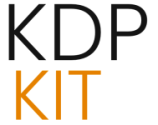Unlock Your Publishing Potential: A Comprehensive Guide to Amazon KDP Templates

In the dynamic world of self-publishing, efficiency and professionalism are paramount. Amazon Kindle Direct Publishing (KDP) offers a powerful platform for authors to bring their work to a global audience. To navigate this landscape successfully, understanding and utilizing KDP templates is crucial. These pre-designed layouts and guides streamline the creation process, ensuring your books meet Amazon’s stringent requirements while also looking polished and appealing to readers.
What Are Amazon KDP Templates?
Amazon KDP templates are pre-formatted files, typically in formats like Microsoft Word, PDF, or PNG, that provide a framework for creating book interiors and covers. They come with specific dimensions, margins, and guidelines to ensure compatibility with Amazon’s printing and digital distribution standards. These templates can range from blank layouts with set margins to more comprehensive designs that include pre-formatted elements like title pages, tables of contents, and chapter layouts. For cover design, templates offer precise measurements for the front cover, back cover, and spine, taking into account factors like page count and paper type.
The Importance of Using KDP Templates
Leveraging KDP templates offers several significant advantages for authors, particularly those new to self-publishing:
- Ensures Compliance: KDP has specific technical requirements for book formatting to ensure a smooth publishing process. Templates are designed to meet these standards, reducing the risk of upload errors or rejections.
- Saves Time and Effort: Manually setting up book dimensions, margins, and bleed areas can be time-consuming and prone to error. Templates provide a ready-made structure, allowing authors to focus on content creation and design.
- Professional Presentation: Templates help create a polished and professional look for both the interior and cover of your book. This attention to detail can significantly impact a reader’s perception and willingness to purchase.
- Cost-Effectiveness: While professional design services are an option, templates offer a more budget-friendly way to achieve a high-quality output, especially for authors starting out.
- Variety of Niches: Templates are available for a wide range of book types, including low-content books like journals, notebooks, planners, and coloring books, as well as more traditional novels.
Types of Amazon KDP Templates
KDP templates can be broadly categorized into two main types:
Interior Templates
These templates focus on the internal layout of your book. They dictate how the text, images, and other elements are arranged on each page. Common interior templates include:
- Lined Notebooks and Journals: Simple templates with lines for writing, often with customizable elements like date fields or prompts.
- Planners: Templates for daily, weekly, monthly, or yearly planners, often including calendars, to-do lists, and goal-setting sections.
- Logbooks and Activity Books: Templates designed for specific purposes, such as workout logs, recipe books, or puzzle books.
- Coloring Books: Templates featuring line art and blank spaces designed for coloring.
- Manuscript Templates: More general templates provided by Amazon KDP itself, offering basic formatting for novels and non-fiction books, including front matter like title pages and tables of contents.
Cover Templates
Cover templates are essential for creating eye-catching book covers that comply with Amazon’s specifications. These templates provide precise dimensions for the front cover, spine, and back cover, ensuring everything aligns correctly. Key aspects covered by cover templates include:
- Dimensions and Bleed: Templates specify the exact width and height of the cover, including the bleed area (an extra margin that ensures no white space appears when the book is trimmed).
- Spine Width Calculation: The spine width depends on the page count and paper type, and templates help authors calculate this accurately to avoid issues with text placement.
- Safe Zones: Templates indicate safe areas where text and important design elements should be placed to avoid being cut off during printing.
- Barcode Placement: Templates often show where the barcode will be placed on the back cover.
Where to Find Amazon KDP Templates
A variety of sources offer KDP templates, catering to different needs and budgets:
- Amazon KDP Official Resources: Amazon provides free manuscript templates and a cover calculator/template generator on their KDP website. These are invaluable for ensuring basic compliance.
- Online Marketplaces (Etsy, Creative Fabrica): Platforms like Etsy offer a vast selection of professionally designed interior and cover templates for various niches, often at affordable prices.
- Specialized Software and Tools: Tools like Canva, BookBolt, and Tangent Templates offer template libraries and design features specifically for KDP creators.
- Independent Designers and Websites: Many designers and publishing resources offer free or premium templates directly through their websites.
How to Use KDP Templates Effectively
Using KDP templates requires attention to detail to maximize their benefits:
For Interior Templates:
- Choose the Right Template: Select a template that matches your book’s genre and content type (e.g., a lined journal template for a notebook, a planner template for a daily planner).
- Understand the Dimensions: Ensure the template’s dimensions (trim size, bleed settings) match your intended book specifications.
- Customize Content: Replace placeholder text and design elements with your own content. If using a blank template, ensure consistent formatting for paragraphs, headings, and page numbers.
- Remove Placeholder Text: Critically, remove all template-specific placeholder text before uploading, as this can lead to rejection.
- Save as PDF: For print books, always save your final interior as a PDF, ensuring fonts are embedded.
For Cover Templates:
- Use the KDP Cover Calculator: Input your book’s details (binding type, paper type, page count) into Amazon’s Cover Calculator to generate precise dimensions and a template.
- Design within Safe Zones: Place all text and crucial design elements within the designated safe zones to prevent them from being cut off.
- Ensure High Resolution: Use high-resolution images (at least 300 DPI) for your cover design to ensure clarity and quality.
- Understand Color Modes: Be aware that print uses CMYK color mode, while digital screens use RGB. Ensure your design software is set to CMYK for print covers to avoid color shifts.
- Export Correctly: Save your final cover as a PDF file, ensuring all fonts are embedded and transparency is flattened.
Recent Trends and Best Practices (2024-2025)
The KDP landscape is constantly evolving, with several trends and best practices emerging for 2024-2025:
- Niche Specialization: With increased competition, focusing on highly specific niches within low-content books (e.g., planners for specific professions, journals for unique hobbies) is becoming more important.
- AI in Design: Artificial intelligence tools are increasingly being used to generate design ideas, prompts for cover art, and even assist in interior layout creation.
- A+ Content: Utilizing A+ Content on Amazon product pages to showcase book interiors and features with enhanced visuals is a growing strategy to improve conversion rates.
- Print-on-Demand Quality: Maintaining high-resolution images and ensuring proper formatting are critical for print-on-demand quality, as any issues can lead to customer dissatisfaction and negative reviews.
- Understanding KDP Policies: Staying updated on Amazon KDP’s terms of service and content guidelines is crucial to avoid account issues or book rejections.
Troubleshooting Common KDP Template Issues
Even with templates, authors may encounter issues:
- Dimension Mismatches: Double-check all measurements, including trim size, bleed, and spine width, against the KDP calculator and template specifications.
- Resolution Problems: Ensure all images and graphics are at least 300 DPI. Avoid upscaling low-resolution images.
- Placeholder Text Left In: Meticulously review your interior files to ensure all template-specific text has been removed.
- Color Shifts: If designing for print, ensure you are using CMYK color mode and understand potential color variations between RGB and CMYK.
- File Rejection: Common reasons for rejection include incorrect file format, missing bleed, incorrect dimensions, or embedded fonts that are not compatible. Always refer to KDP’s specific guidelines.
Conclusion
Amazon KDP templates are indispensable tools for self-published authors aiming for a professional and successful publishing journey. By understanding the different types of templates available, where to find them, and how to use them effectively, authors can save time, ensure compliance, and create books that stand out in a competitive marketplace. As the KDP platform continues to evolve, staying informed about current trends and best practices, including the integration of AI in design and the importance of A+ content, will further enhance an author’s ability to thrive.






